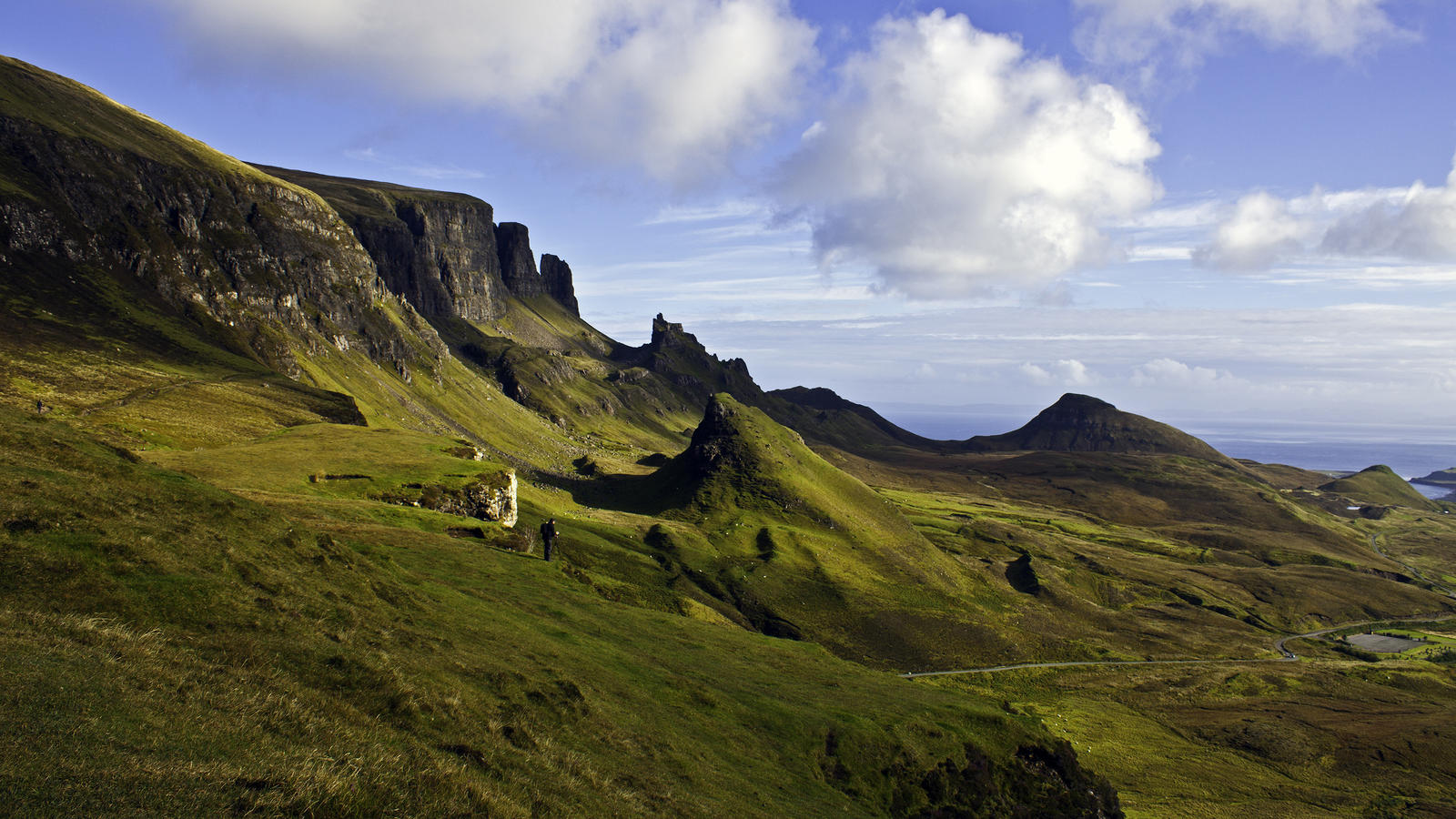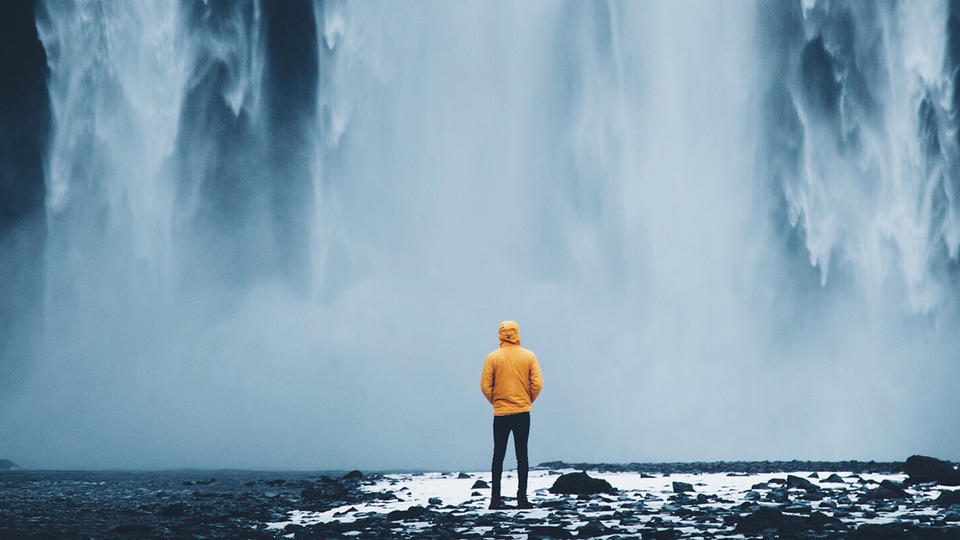
Wide Open Spaces
A Texan Family Treks Through Scotland
By Claudia Kolker
A Texan Family Treks Through Scotland
This article first appeared in Houstonia as "A Texan Family Treks Through Scotland"
“It’s an easy walk to the village, even with rain. You’ll have the true Scottish experience,” the young woman at Highland Riding Centre said. Thousands of miles from my Houston home, I had to laugh. Something about an inconvenient local climate and the locals’ pragmatism about it felt very familiar.
My two preteen daughters and I had just arrived by train, traveling about 150 miles north from Edinburgh to the Central Highlands of Scotland, where we made the town of Inverness our home base as we explored the region. This part of the world had called all of us for separate reasons. The younger girl hankered to see kilts and Loch Ness, while the older one longed for wild, empty spaces. As for me, after covering Houston immigrant communities for years, I’d grown fascinated by the way Scottish culture, in particular, had left its stamp on Texas.
Once we’d swathed ourselves in shawls and zipped jackets, we found the young woman directing us to the village was right. Yes, it was drizzling. But striding the road past hazy hills and hollyhocked gardens, I started to feel robust and self-sufficient. By the time we got to tiny Drumnadrochit, a town of about 1,000 people on the western edge of Loch Ness, ducking into the warmth of Annie’s Apple tearoom seemed like a delicious reward.
As did all the homemade cakes, glowing in their glass domes. With a new enthusiasm gleaned from watching The Great British Bake Off, we chose the lemon drizzle cake, gathered our pots of Earl Grey, and settled at a rustic table with a deluxe Scrabble board. It started raining in earnest. A man blustered in with a gentle, damp Labrador. The cake was beautifully compact and fragrant, less sweet and less puffy than its U.S. counterpart.
“Would you like some help?” the gray-haired shop owner, Annie, asked politely. She didn’t mean more tea. It turned out that she was an internationally competitive Scrabble player, and within moments was helping the girls plop down words I’d never heard of: the same kind of sociability, I recognized, that had made me fall in love with Texas when I moved there 25 years ago.
Three hours later the rain was gone, and the girls and I set out again for the stables. We were intent on seeing Loch Ness 19th-century style: on horseback. Composed of 23 square miles of icy black water, the lake, which is more than 700 feet deep in some places, snakes through a crevice encased in black peat, which is what makes it famously murky. The girls looked at home on the calm horses.
Staring at the bright, obsidian waters, I thought of the story a man from Inverness had told us. Growing up, he and his friends automatically got beatings for the slightest infraction at school. One day, a boy who took a rowboat down the loch to school showed up late, pale as a sheet, with no apology. He’d seen something in the water, he said. “Describe it,” the teacher demanded. The boy gave a detailed account—the smell, the shape of the head, the neck, the way the water churned near his boat until he rowed to shore and ran the rest of the way to school. The teacher sent him to his seat. “You saw it,” he said. “I’ve seen it too.”
Our horses loved to visit the loch there, our young woman guide told us, and sure enough, without bidding they crossed the road, ambled through a forest, and dashed us over a meadow to the edge of the water. Its dark surface glittered. All three of us leaned closer, peering down to try to discern what might be lurking below.
The next morning we took a four-hour bus ride from Inverness to the town of John O’Groats, where our first order of business was finding something woolly. The ferry to Orkney, an archipelago of 70 small islands on Scotland’s northernmost tip, was leaving in 30 minutes. We needed more layers.
People have lived on the wind-whipped Orkney islands, 20 of which are currently inhabited, for at least 8,500 years. It lies so close to Norway that many of the islanders identify less with fellow Scots than with the Vikings who sailed here, built settlements and burial mounds, and hoisted longboats on their backs to portage between waterways. The prospect of touching down at this strange, ancient crossroads was irresistible.
Docking at Mainland, the largest island, we hopped onto another bus, emerging at Skara Brae, the remains of a 5,000-year-old village of eight houses tucked into the side of a cliff and surrounded by barking seagulls and booming waves.
The place was inhabited from about 3180 BC to about 2500 BC, when it was abandoned for reasons that remain unclear today, then hidden for centuries. In 1850 it was rediscovered after a giant storm tore the sand cover from the ancient dwellings, revealing the most complete Neolithic village found in Europe.
Today you can stop at a restored underground warren, built before the pyramids at Giza. Here Skara Brae’s people cooked in underground common kitchens, stocked earthen water tanks with live fish, and slept in snug, grass-filled hutches built into the walls. “I’d like a bed like that,” my older girl said.
Peering into the stark earthen apartments, I thought of the parched-mud pioneer huts near Texas’s Big Bend. Extreme as both environments are, I could see a common appeal. There will always be temperaments, I thought, willing to sacrifice nearly everything—comfort, ease, even safety—for the chance to build a snug place somewhere wild, with no one nearby to boss them.
Immigrant populations from Scotland have been coming to the United States since the 17th century, with many eventually opting to settle here in the Lone Star State. In fact, it can seem as if almost everyone who formed Texas, from Sam Houston to Cherokee leader Chief Bowles, had Scottish or Scots Irish blood in them.
Today the state is home to one of the greatest concentrations of Scottish and Scots Irish stock in the country. Immigrants from the Scots Irish borderlands, in particular, brought cultural traditions that shape Texas to this day, said Rice history professor John Boles, author of Jefferson: Architect of American Liberty. Cautioning against generalizing – the Scots Irish who came to America were diverse both ethnically and economically -- Boles said, “I do think there is a personalism and loyalty in politics that is influenced by Scots Irish tradition. White Southerners will often vote for a person, a persona, rather than a policy per se. There is also a value on kinship, property and religious identity that reflects Scots Irish influence. "My half-Scottish friend Helen Mann, who lives in Houston, says she sees the links between the two cultures clearly. “Long historical memory,” she declared in an email. “Loyalty. Resistance to automatic authority. And individuality and self-sufficiency: ‘I am as good as you are.’”
As a devoted Texan transplant, I thought she got it just right.
With just one day left in Scotland, we headed west, to the Isle of Skye. The largest of the Inner Hebrides islands, Skye embodies romantic Scotland for Americans—and Scots. “It’s my favorite place,” a young man told me, “because of the quality of the air.”
The island is a popular road-trip destination, thanks to a long bridge linking it to the mainland. At dawn we’d lined up outside of our Inverness hotel, where Raymond, a sturdy, bald-headed man in a kilt, ushered us onto a van and set off. Little by little, the lanes and shops of the town fell away. The air misted. Pearls of water beaded the windows. And suddenly there it was: a vista of green crags rising over the hills like crashing waves.
It was easy to see why Skye has served as the setting for so many novels and TV shows, including cult favorite Outlander. There’s something dreamy about these expanses, almost like gigantic stage sets. Yet the emptiness that makes the Highlands so ravishing is largely a relic of tragedy.
Three hundred years ago, these moors were strewn with farms whose tenants answered to clan chieftains, Raymond told us as we rolled past the dark green hills. Many Highlanders earned rights to their land as warriors, answering the chieftain’s command to fight other clans or British soldiers.
But after a brutal defeat at the Battle of Culloden in 1746, during which the British slaughtered more than 1,500 Highland soldiers in less than an hour, Highlands culture began to die, too. The clan armies were outlawed. Kilts, weapons, and bagpipes—classified as weapons of war—were forbidden on pain of execution, and some chieftains betrayed their own people, forcing them from the land to make space for sheep.
An entire culture was homeless. Many dispersed, ending up in Texas and elsewhere. “We have to move on from the past,” Raymond said as he led us down a path to the moor. “But we can’t forget it.”
The air exploded with fragrance: heather, its rough stalks and pink petals covering the ground for miles. Underneath our feet, the ground bounced. This was peat, Raymond explained, as the girls ran ahead toward a narrow trail on a crag.
While the sogginess kept the land green, he said, it made growing crops difficult. He pointed at a brown rectangle a few miles away, where locals were reviving the custom of peat-digging as a cheap source of fuel.
My urban Houston girls had now raced too far ahead for me to catch them. I could see them talking animatedly as they scrambled along the bluff, a stream and velvety hills below them. “Living on the edge!” one of them cackled. I held my breath and let them run.
Claudia Kolker is the associate director of intellectual capital at Rice Business and author of “The Immigrant Advantage: What We Can Learn From Newcomers To America About Health, Happiness, and Hope."
John B. Boles is the William P. Hobby Professor of the History department at Rice University.


